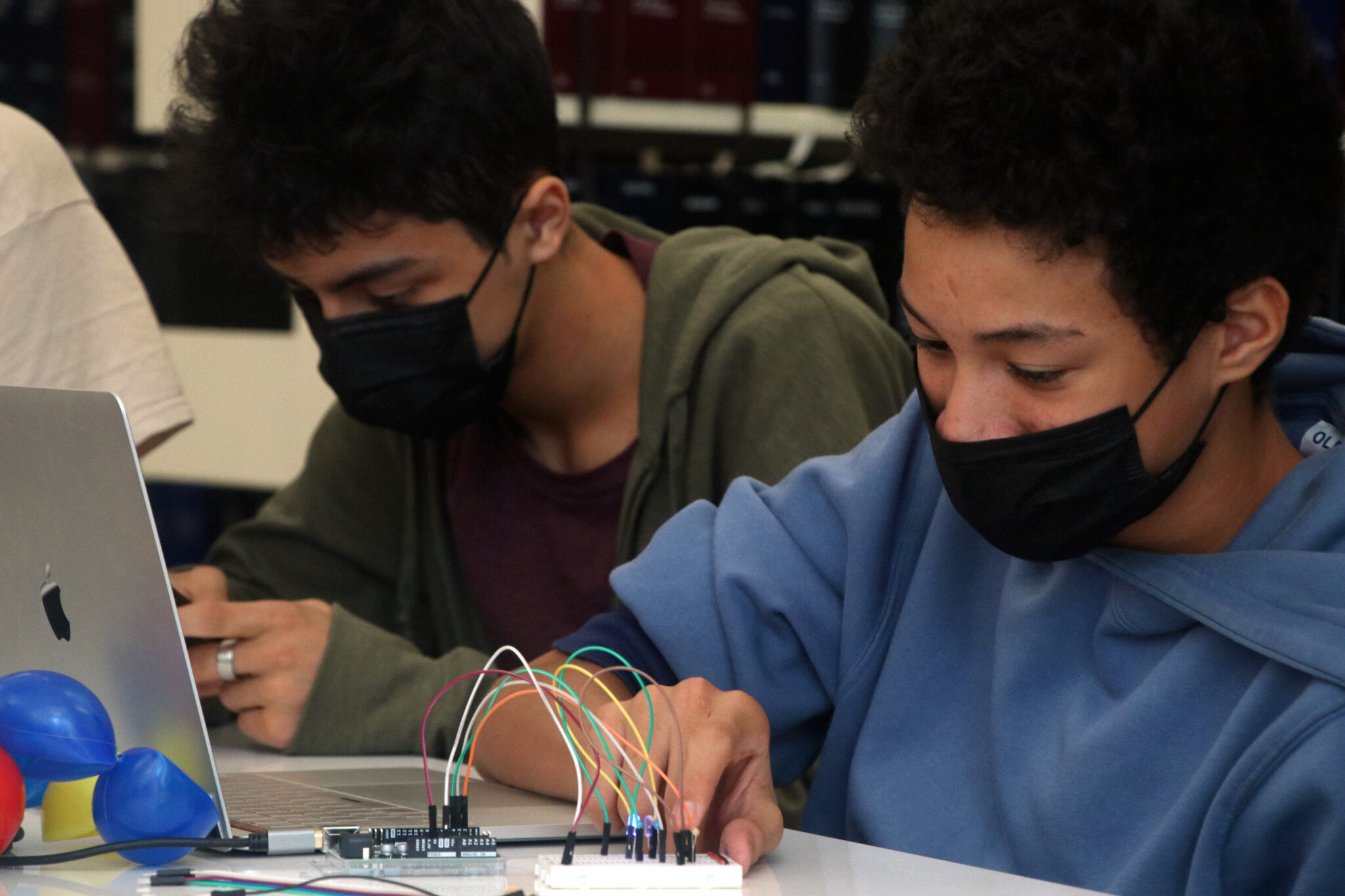



Note: Digital Day Camp will not be held during the summer of 2023.
An artist-led program that annually engages Eyebeam alumni as instructors, Digital Day Camp is a six-week summer program introducing young people ages 14-18 to creative coding and digital art practices. Through workshops, participants learn to use various software and hardware tools to create interactive projects. The program culminates in a showcase event where participants present their projects to an audience of peers, family, and community members.
Digital Day Camp challenges youth to apply creative thinking strategies across various tools and topics to develop critical, empowering, and long-lasting relationships with technology and their role in it as agents of change.
Every educational initiative is core to the furtherance of Eyebeam’s mission. We believe in the following:
Openness: Eyebeam is committed to making complex technologies understandable to the public and to make both programs and artists’ work accessible to diverse audiences.
Invention: Eyebeam encourages participating artists to engage in experimentation and to imagine and realize their aspirations.
Justice: Eyebeam acknowledges that both the art world and technology realm are inequitable environments for marginalized communities and our organization believes all people are deserving of full recognition for their inherent worth and dignity, at all times.
Access: To teach fundamental technology concepts by pairing minimal materials with maximum impact.
In 2022, our program focused on the theme of “Accessible Smart Cities and the Digital Twin.” The theme explored the intersection of technology and accessibility in urban environments, with a focus on creating inclusive digital experiences. We were excited to hold this program in person at the Andrew Heiskell Braille and Talking Book Library, where we provided a hands-on and accessible learning experience for our students.
Eyebeam’s Digital DayCamp is grateful to Capital One Financial Corporation for their leadership support, as well as New York State Council on the Arts and National Endowment for the Arts for their generous contributions. We would also like to acknowledge Rentech and the School of Visual Arts for supplying laptops for this program.

